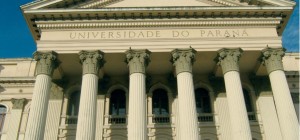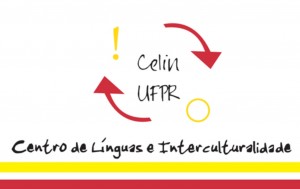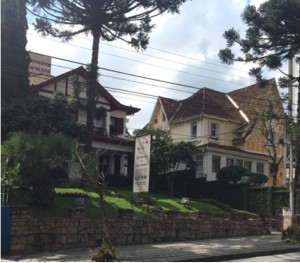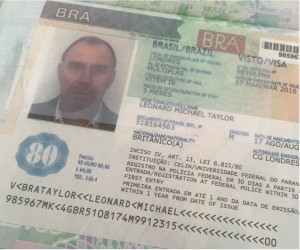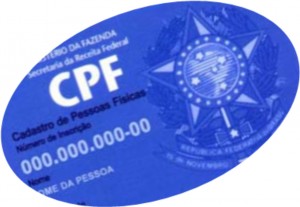If asked to consider the beauty of Brazil, Curitiba is not the first place that springs to mind. But the country’s richest and greenest city has so much to offer.
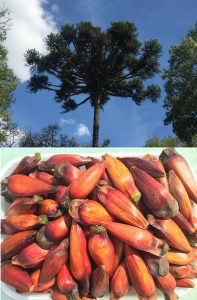
Curitiba, “Pine Nut Land, is the capital and largest city of the state of Paraná. The city’s population is just under 2 million, making it the eighth most populous city in the country, and the largest in Brazil’s Southern Region. Greater Curitiba comprises of 26 municipalities with a total population of over 3 million.Curitiba is an important cultural, political, and economic centre in South America. The city sits on a plateau, 932 metres above sea level and is located 105 kilometres west of the major seaport of Paranaguá. The city hosts the Federal University of Paraná, the oldest and one of the most prestigious in Brazil.
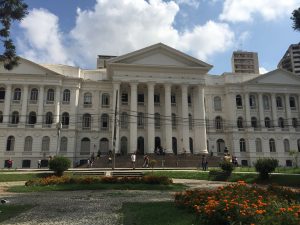
Curitiba has a subtropical highland climate and the city lies in a humid temperate zone. It has a mild and wet winter, with an average minimum temperature of 7 °C. During summertime, the average temperature is around 25 °C in the day but it can get above 30 °C on some days. Its altitude makes it the coldest Brazilian state capital.
Curitiba has 26 parks, the oldest of which is the centrally located Passeio Publico, which opened in 1886, numerous forests and over one thousand green spaces some of which will be featured in this blog “Gringo in Brazil”, see below.
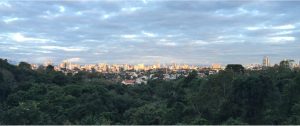
The green urban areas of Curitiba are amongst the largest in the world and this is why it is known as Brazil’s Green Capital and is regarded as one of the world’s best examples of green urban planning.
Southern Brazil is not where you would expect to find the city that chartered the course towards urban sustainability for the rest of the world. The unique culture of enlightened urban policy and citizen engagement first emerged in Curitiba in the 1960s.
The events that set the stage for Curitiba’s success revolved around the military dictatorship that ruled Brazil between 1964 and 1985. Government officials were appointed, not elected and could impose whatever they wished within their jurisdiction.
Curitiba is a rare example of this power being used well, a fact that has everything to do with its three-time mayor, Jaime Lerner. Lerner could be seen as a benevolent dictator, he was an architect and urban planner, not a politician and his vision of what a city could be was backed with a profound understanding of how to make it happen. Though Lerner’s ‘sustainability regime’ was imposed on the city in the beginning, the results were so positive he was elected by an overwhelming majority after democracy was restored in Brazil in the 1980’s.
The city has had an urban master plan since 1968. It is an excellent example of managing urban growth in a sustainable way. The master plan includes social, economic and environmental programmes and includes:
Creating and retaining parks and green space beside the rivers. This acts as a floodplain. When the Iguazu River floods, some areas created are used as boating lakes.
The green spaces being dedicated to different ethnic and immigrant groups.
Urban growth is restricted to corridors of growth – along key transport routes. Tall buildings are allowed only along bus routes.
- A rapid transit bus system operates. This is cheaper to run than a tube system. Some employers subsidise their employees who use it. 80% of travellers use it.
- The rapid transit bus system uses triple section bendy buses up to 28 metres long (ônibus bi-articulado). The system carries two million passengers a day. The bus fare is the same wherever you go. No one lives more than 400 metres from a bus stop.
- “Lighthouses of Knowledge”. These are free educational and internet centres.
- A green exchange programme. The urban poor bring their waste to neighbourhood centres. They can exchange their waste for bus tickets and food. This has many advantages, for example the urban poor areas are kept clean, despite waste trucks not being able to reach them easily.
- COHAB, the public housing programme, provides 50,000 homes for the urban poor.
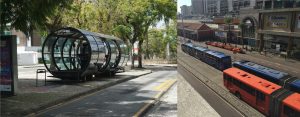
The city was originally named by the Portuguese in 1693 as “Vila da Nossa Senhora da Luz dos Pinhais” (Village of “Our Lady of the Light” of the Pines) but the name was changed to “Curitiba” in 1721. One theory is that the chief of the local indigenous people demanded a shorter name and requested the name kurí tyba, meaning pine nut land in the local Tupi language.
The original settlers of the city were Portuguese and Spanish immigrants that were predominantly cattle-farmers. For most of its early years, Curitiba’s agriculture consisted of subsistence farming while its economy was centred on mineral extraction.
Curitiba’s agrarian economy was bolstered by the cattle drivers called tropeiros that visited and settled in the region during the winter periods. These cattle drivers travelled with their herds from Viamao in the state of Rio Grande do Sul to the fair in Sorocaba in the state of Sao Paulo. While the tropeiros stayed in Curitiba, they traded with local merchants and helped to establish Curitiba as a transit trading post for different kinds of minerals, livestock and agricultural products. This was the first economic boom that helped Curitiba start to grow as a major city in Brazil but there were three other periods of economic success that occurred before the 20th century; two of which occurred at about the same time. The production and use of the yerba mate plant (Ilex paraguariensis) for tea and the use of wood for the construction of the railway were both highly influential in developing Curitiba’s economy. Yerba mate was used to create a bitter tea called ‘chimarrão’ which became one of Curitiba’s largest exports during the 19th century. It became so successful that the ‘Mate Barons’ who controlled the companies built mansions in Curitiba that still exist today.
From 1880-1885, the Curitiba to Paranaguá railroad was built giving access to the coast. The railway is still in operation today and moves considerable quantities of grain, mainly soya from Curitiba to the port of Paranaguá. There is also a daily tourist train, the Serra Verde Express from Curitiba to Morretes through the Largest Atlantic rainforest left in Brazil. You can see a video of my journey on this blog. Having this connection helped the city to grow over the next 60 years to a population of roughly 140,000 by 1940. During this time migrant workers in Curitiba began to be replaced by German, Italian, Japanese, Ukrainian and other various European immigrants which helped to expand the city’s
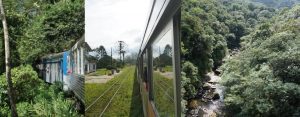
economic and cultural development. The most rapid population increase was during the 1950s after the development and implementation of the Agache Plan in 1943. The Agache Plan was Curitiba’s first comprehensive plan and was developed in anticipation of a post-World War II building boom. In 1968 came the Urban Master Plan a modification of the Agache plan which was overseen by Jaime Lermer, who after the end of the military dictatorship carried it on as the elected mayor.
The Cidade Industrial de Curitiba, or CIC, was developed in 1973 as an economic project to create an industrial zone for the city of Curitiba. The area located outside of the city was designated for new factories and the relocation of city centre manufacturing companies. Over 1,200 factories occupy the space and provide approximately 30,000 jobs all from none polluting industries. With Curitiba being marketed as a successful urban planned area, many corporations were persuaded to relocate. The change from an agricultural processing centre to an industrial centre throughout the 70’s and 80’s was partly caused by the population increase during this time. Today, Curitiba is highly involved in the automotive industry and Volvo, Renault and Audi-VW each have factories in the industrial area of the city. Nearly half the GDP of the state of Parana is due to the industries within Curitiba.
In the 1850s waves of European migrants arrived in Curitiba, mainly from Germany, Italy, Poland and Ukraine all of whom have contributed to the city’s economic and cultural development. The German immigrants, who came to Curitiba around 1833, were honoured in 1996 with their own wood, the Bosque Alemão. In the park on the grounds which once belonged to the Schäffer family, immigrants from Germany. In memory of the Polish immigrants, the Curitibanos planted the Bosque do Papa (Pope’s Wood), which was officially opened by the Polish Pope, John Paul II. The descendants of the Ukrainian immigrants celebrate their folk festivals at the Park Tingui, where they have built a wooden Orthodox church in the Ukrainian style. Japanese immigrants began arriving in 1915 and the city has the second largest Japanese community in Brazil, after São Paulo. Curitiba also has the second largest Polish diaspora in the world, second only to Chicago, Nowadays, smaller numbers of foreign migrants arrive, mainly from the Middle East, Africa, The Caribbean and South America.
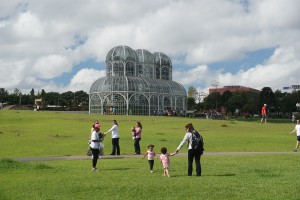
The biggest expansion in the population occurred after the 1960s, with the innovative urban planning that changed the population size from some hundreds of thousands to more than a million people. Curitiba’s economy is based on industry and services and is the fourth largest in Brazil. Economic growth occurred in parallel to a substantial inward flow of Brazilians from other cities in the country, as approximately half of the city’s population was not born in Curitiba.
Today, Curitiba’s economy is based on industry and services and is the fourth largest in Brazil. Economic growth has occurred in parallel to a substantial inward flow of Brazilians from other cities in the country, as approximately half of the city’s population was not born in Curitiba.
Today, Curitiba’s economy is based on industry and services and is the fourth largest in Brazil. Economic growth has occurred in parallel to a substantial inward flow of Brazilians from other cities in the country, as approximately half of the city’s population was not born in Curitiba.

